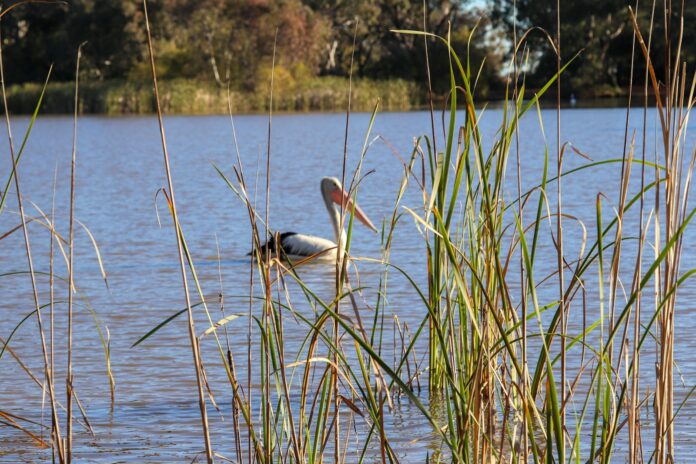Australia deepens its commitment to environmental stewardship with a new $2.25 million investment aimed at bolstering wetland conservation and research. The funding, announced by the Albanese Government, is targeted at improving data collection, refining management strategies, and ensuring safe, resilient wetlands for future generations. As Perth and broader Western Australia grapple with urban growth alongside environmental challenges, these initiatives promise to provide vital data and support for some of Australia’s most treasured natural assets.
The investment is allocated across four key projects. CSIRO will receive $1.3 million to establish a Ramsar Wetlands Hub, an initiative designed to harness cutting‐edge science in monitoring and protecting internationally recognised wetlands. In parallel, Geoscience Australia is set to obtain $500,000 to advance the National Wetlands Inventory, a project that aims to digitally capture and share comprehensive data on the state of Australia’s wetlands. A further $250,000 will support engagement and implementation of the Convention on Wetlands in the Pacific region, ensuring Australia’s voice is strong in regional environmental negotiations. Finally, $200,000 is earmarked for Wetlands International to update the global Waterbird Population Estimates database—a critical resource in tracking the health of waterbird populations that depend on these unique ecosystems.
A Legacy of Wetland Importance in WA
Western Australia is home to a number of internationally significant Ramsar wetlands. Sites such as the Peel-Yalgorup wetland system, which lies just south of Perth, play a dual role in conservation and community benefit. Spanning approximately 26,000 hectares, Peel-Yalgorup supports over 80 species of waterbirds, including several endangered by habitat loss and climate pressures. WA’s wetlands not only provide vital habitat for wildlife but also deliver essential ecosystem services such as flood mitigation, pollutant filtration, and natural coastal protection.
Historically, the Perth region has witnessed extensive wetland loss. Research by the WA Department of Water and Environmental Regulation suggests that up to 80% of the original wetlands in the Swan Coastal Plain have been lost since European settlement. This historical backdrop underscores the significance of renewed conservation efforts and the promise of modern scientific tools and robust data to guide future protection strategies.
CSIRO and the New Ramsar Wetlands Hub
CSIRO’s new role in establishing the Ramsar Wetlands Hub is a linchpin of the government’s approach. The CSIRO Land and Water division already has a strong record in developing wetland monitoring technologies and ecological assessment tools. The $1.3 million funding will boost these capabilities, providing enhanced channels for tracking wetland health. Under the Ramsar Convention—an international treaty designed to protect significant wetlands—Australia proudly lists 67 sites covering more than 8.3 million hectares. This investment means that the latest scientific methods will soon inform national and local conservation policies, directly supporting WA’s critical wetland landscapes.
Geoscience Australia’s National Wetlands Inventory
The integration of state-of-the-art satellite imagery and on-ground analysis is central to Geoscience Australia’s National Wetlands Inventory project. Using data from Landsat and Sentinel satellites through initiatives like Digital Earth Australia, researchers will create detailed maps that offer both current and historical insights into wetland dynamics. The allocated $500,000 will help address and fill existing gaps in the nationwide inventory, allowing for more unified and coordinated conservation strategies. For Perth and surrounding regions, reliable and accessible data supports informed decision-making regarding urban development and environmental protection, ensuring that expansion is balanced with the preservation of natural assets.
Economic, Environmental and Community Implications
Wetlands deliver ecosystem services that far outweigh their apparent simplicity. Various Australian government research bodies estimate that these natural landscapes play a role in flood mitigation, water purification, and carbon sequestration—services that collectively offer immense financial and environmental value. For the Perth metropolitan region, wetlands contribute to both urban quality of life and tourism. Areas like the Peel-Harvey catchments not only offer recreational spaces but also natural buffers that protect urban infrastructure from flood damage and water quality issues.
Beyond the local benefits, enhanced environmental monitoring and data collection have international ramifications. As Australia collaborates with partners across the Pacific, its strategic investments support broader conservation goals. The $250,000 allocated for Pacific engagement under the Convention on Wetlands exemplifies Australia’s commitment to fostering regional cooperation. At the upcoming 15th Meeting of the Conference of the Contracting Parties (COP15) in Zimbabwe, Australia’s strong representation underscores its responsibilities and leadership on the global stage.
Challenges and Future Directions
While the new funding offers promising tools for protecting Australia’s wetlands, experts caution that sustained efforts will be necessary to counteract multi-decadal environmental changes and development pressures. Climatic trends, particularly in southwest WA, indicate potential drying trends and increased evaporation—a scenario that threatens wetland stability. Moreover, past experience with funding gaps in environmental monitoring programmes remains a concern for long-term project sustainability.
Balancing urban development alongside environmental preservation is a pressing challenge in WA. The State Planning Policy underscores the need for integrated wetland conservation strategies that recognise both ecological significance and community needs. In this context, the enhanced data collection provided by these initiatives is critical. It empowers local governments and community stakeholders with the information required to make balanced planning decisions that safeguard natural resources while accommodating growth.
Honouring Tradition and Forward Thinking
Minister for Environment and Water, Murray Watt, emphasised that Australia’s wetlands are more than just natural features; they are living legacies that protect from coastal erosion, flood risks, and pollution. He noted their profound cultural importance to First Nations People who have nurtured and relied on these ecosystems for thousands of years. Minister for Resources Madeleine King also highlighted the growing reliance on geospatial data from Geoscience Australia to inform better protection of these spaces. Together, the ministers underscored that while the investment marks significant progress, continued commitment and enhanced collaboration across federal, state, and local levels are essential.
Conclusion
The Albanese Government’s $2.25 million investment stands as a proactive response to the evolving challenges of environmental change and urban expansion in Western Australia and Australia at large. With improved scientific tools, better data collection, and stronger regional engagement, the initiatives signal a renewed commitment to preserving wetlands that have both natural and cultural significance. For communities across Perth and beyond, these measures promise not only a safeguard for biodiversity but also a foundation for more resilient, informed, and sustainable future planning.
As Australia continues to balance development with environmental care, these initiatives remind us that proactive, science-driven investments in natural ecosystems are essential for building a future where nature and society thrive in concert.

